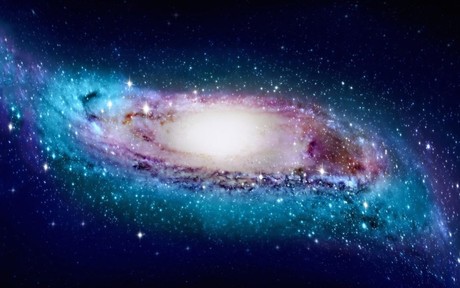3D map of the Milky Way reveals its true shape

Astronomers from Macquarie University and the Chinese Academy of Sciences have used over 1300 ‘standard’ stars to map the real shape of our home galaxy. Published in the journal Nature Astronomy, the map reveals that the Milky Way’s disc of stars becomes increasingly ‘warped’ and twisted the further away the stars are from the galaxy’s centre.
“We usually think of spiral galaxies as being quite flat, like Andromeda, which you can easily see through a telescope,” said Professor Richard de Grijs, a co-author on the study from Macquarie University. Unfortunately, trying to determine the real shape of our own galaxy is like standing in a Sydney garden and trying to determine the shape of Australia.
“It is notoriously difficult to determine distances from the Sun to parts of the Milky Way’s outer gas disc without having a clear idea of what that disc actually looks like,” said lead author Xiaodian Chen, from the Chinese Academy of Sciences.
For the past 50 years, there have been indications that the hydrogen clouds in the Milky Way are warped. This is confirmed by the new map, built using 1339 large pulsating stars each up to 100,000 times brighter than the Sun. Data on these classical Cepheid stars were provided by the Wide-field Infrared Survey Explorer (WISE), a NASA space telescope.
The map indicates that the warped spiral pattern is caused by torque from the spinning of the Milky Way’s massive inner disc of stars, some of which are quite young. Similarly twisted spiral patterns have been observed in the outer regions of around a dozen other galaxies, making the Milky Way’s shape rare but not unique.
“This research provides a crucial updated map for studies of our galaxy’s stellar motions and the origins of the Milky Way’s disc,” concluded study co-author Licai Deng, a senior researcher at the Chinese Academy of Sciences.
Follow us on Twitter and Facebook for the latest industry news. To receive our bimonthly magazine and weekly newsletters, click here.
Why are young plants more vulnerable to disease?
Fighting disease at a young age often comes at a steep cost to plants' growth and future...
Liquid catalyst could transform chemical manufacturing
A major breakthrough in liquid catalysis is transforming how essential products are made, making...
How light helps plants survive in harsh environments
Researchers from National Taiwan University have uncovered how light stabilises a key...




